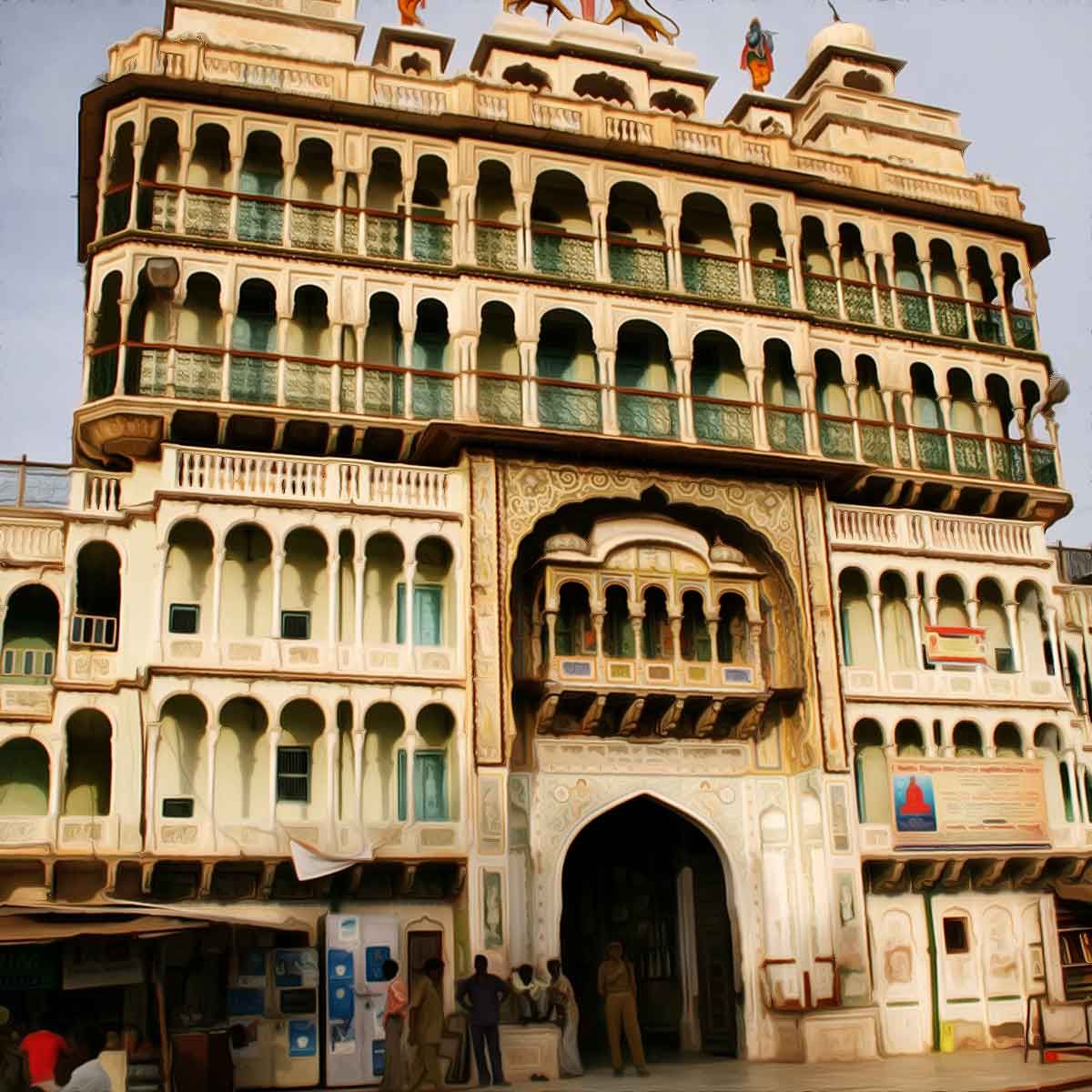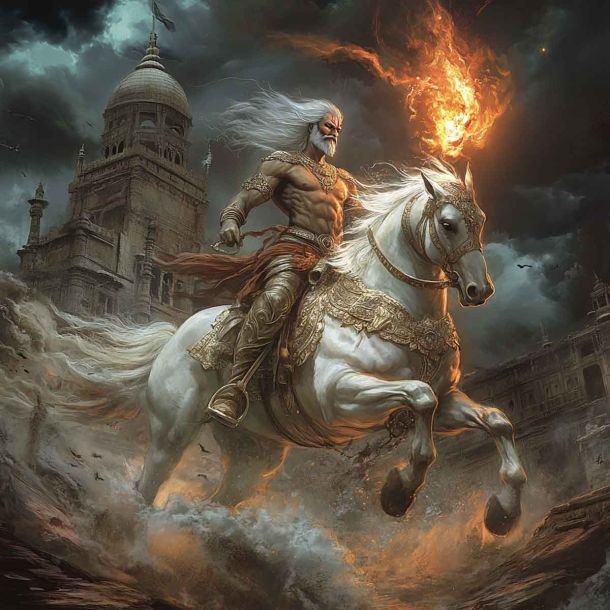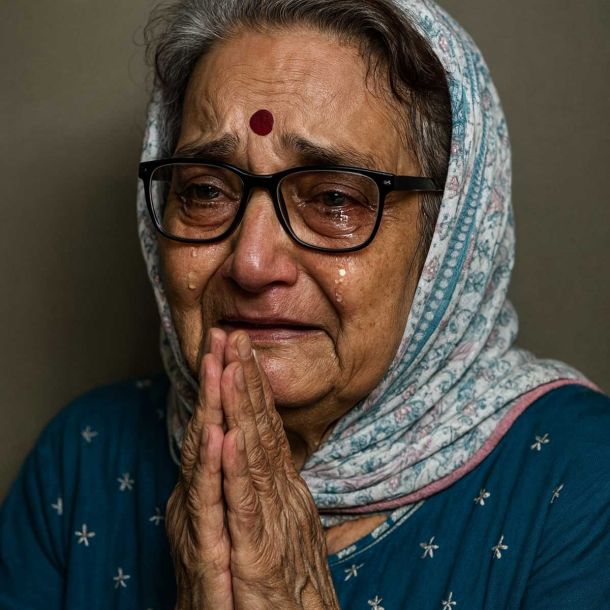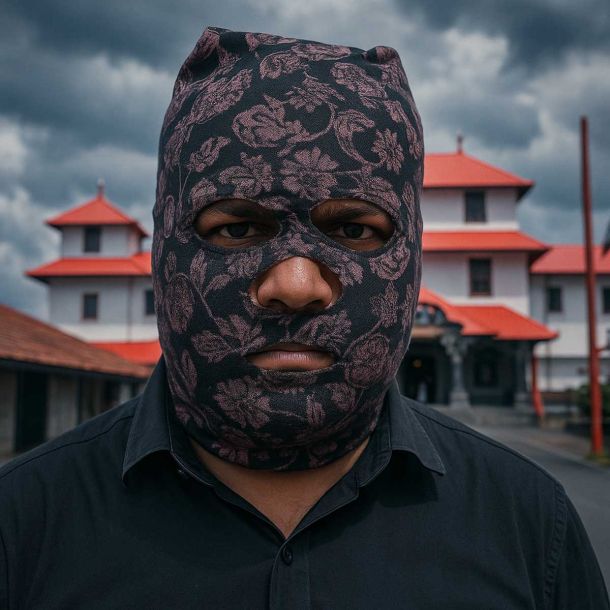More Coverage
Twitter Coverage
Satyaagrah
Written on
Satyaagrah
Written on
Satyaagrah
Written on
Satyaagrah
Written on
Satyaagrah
Written on
Join Satyaagrah Social Media
"What matters is not the belief a man holds, but the depth at which he holds it": Historic Rani Sati temple is the largest temple in India dedicated to Rani Sati, a Rajasthani brave woman of Mahabharata times who committed Sati, also referred to as Dadiji

Rani Sati Temple (राणी सती दादी मंदिर) is a temple located in Jhunjhunu, Jhunjhunu district, in the state of Rajasthan, India. It is the largest temple in India devoted to Rani Sati, a Rajasthani lady who lived sometime between the 13th and the 17th century and committed sati (self-immolation) on her husband's death.
|
Various temples in Rajasthan and elsewhere are devoted to her worship and to commemorate her act. Rani Sati is also called Narayani Devi and referred to as Dadiji (grandmother).
The story of Rani Sati Dadi Maa starts from the time of Mahabharata. The young and heroic warrior, Abhimanyu, was killed by the Kauravas on the battlefield by using unethical methods when he was unarmed. Abhimanyu's wife Uttara was shocked and distraught to hear of her husband's death. As a Hindu wife, Uttara was devoted to her husband and, upon hearing of his death, wanted to ascend his funeral pyre and commit Sati. She stated her intention of joining her husband in death and in the hereafter. While the act of Sati is held to be meritorious to the highest degree, the elders of her family told her that Sati at this point would be sinful rather than meritorious. This was because Uttara was pregnant at this time, and a pregnant woman committing Sati is against Dharma, they said.
Shree Krishna, who was divinity personified, was also Abhimanyu's maternal uncle. He told Uttara that harming an unborn child is an unforgivable sin and she should accept that committing Sati was not in her destiny in this lifetime. Uttara accepted that, as a pregnant woman, she would be sinning if she committed Sati, and therefore she must continue to live as a widow. It was a bitter prospect for Uttara, a young woman who had lived her youth so happily with such a heroic young man, to now live a long life with only the memory of such a glorious husband. Uttara agreed not to end her life, and sought a blessing from Shree Krishna: that she be married to Abhimanyu in every future lifetime, and that she either live throughout every lifetime as a Suhaagan, or, if it ever be in her destiny to be again widowed, she be spared the additional sorrow of life without her husband; she asked that she be able to attain the venerable status of Sati at least in that future lifetime. Shree Krishna granted her the boon she sought.
In a future lifetime, Uttara was born as the daughter of Gursamal Birmewal in the village of Dokwa in present-day Rajasthan and was named Narayani. Abhimanyu was born in Hissar in present-day Haryana as a son of Jaliram Jalan and was named Tandhan Jalan. Both of them were born into the Maheshwari subcaste of the trading (Bania) caste. Tandhan and Narayani were duly married to each other at a very young age and were leading peaceful life. Tandhan was in possession of a beautiful horse that was being eyed by the son of the king of Hissar for quite some time. Tandhan refused to hand over his precious horse to the king's son. The king's son then decides to forcefully acquire the horse and thus challenges Tandan to a duel. Tandan fights the battle bravely and kills the king's son. The enraged king then kills Tandan in front of Narayani in the battle. Narayani, symbolic of female bravery and power, fights with the king and kills him. She then commanded Ranaji (the caretaker of the horse) to make immediate arrangements for her to be set ablaze along with her husband's cremation. Ranaji, playing a vital role in fulfilling her wish to be sati with her husband, is then blessed by Narayani that his name will be taken and worshiped along with her name and since then she is known as Rani Sati.
|
The accounts of Rani Sati's life and the events leading to her death vary widely. Her death has been dated to 1295 or 1595 in some re-tellings, while others place her in the 14th century, or even the 17th century. One such legend, recounted by Sakuntala Narsimhan, says:
[Rani] was a seventeen-year-old girl of the Bania caste. The legend is that the nawab coveted the white mare that her betrothed rode on, and in the confrontation that ensued, [Rani's husband] Tandhan Das was killed, leaving his faithful servant as the only survivor apart from Dadi Narayani Devi, and her mare. When the servant asked her whether he should take her back to her father's or to her father-in-law's, she is said to have replied that she would become a sati and wherever the horse stopped while carrying the ashes of the couple, a temple to their memory should be raised.
Another version of the legend, as related by Anne Hardgrove, says:
..., on one day about six hundred years ago a fourteen-year-old Hindu bride named Narayani Devi was coming home for the first time with her husband (of the Jalan lineage) just after their marriage. Her husband worked as a merchant in Jhunjhunu. Muslim invaders suddenly attacked her husband and his companions, brutally killing them. Only Narayani Devi and (in some versions) a loyal Muslim servant named "Rana" survived the attack. According to the story, Narayani Devi then bravely burned herself to death by spontaneously bursting into flames to avoid being captured and kidnapped by these invaders.
Other accounts ascribe the killing of her husband to a band of dacoits and say that Rani died by the same hand in trying to defend her honor. Yet other versions regard Rani as the first of thirteen widows in her Jalan family to commit sati.
Temple
Jhunjhunu Shri Rani Sati Mandir in Jhunjhunu has a history of more than 400 years and is a commanding testimony to feminine bravery and motherhood with rich tales of history that captivate the fancy of all tourists. Counted among the magnum opus temples of India, Ranisati Temple in Jhunjhunu is famous for its paintings. It is one of the earliest pilgrimages in the country. This imposing historic masterpiece is unparalleled in its appeal and is a delight to all eyes.
Located in Jhunjhunu, Rani Sati temple in Jhunjhunu it is one of the most magnificent temples in India. The temple enjoys the distinction of being one of the ancient pilgrimages in the country. The temple is a historic and unprecedented work of genius that warrants a special visit.
The temple is notable for not holding any paintings or statues of either female or male gods. Instead, a Trishul depicting power and force is worshipped religiously by the followers. A portrait of Rani Sati dadiji is located in the pradhan mand. The temple is constructed from white marble and has colorful wall paintings.
|
Observances and festivals
Billions of worshippers and followers, not only in India but worldwide too come to visit Jhunjhunu's Rani Sati Temple. Devotees from all over offer their prayers and puja every day almost ritualistically. Jhunjhunu Rani Sati Temple is the epitome of secular thoughts of India as followers of Hindu, Muslim, Sikh, Christian, and Jain follow and worship Shri Rani Satiji with equal piety, devotion, and unwavering faith.
On the occasion of Bhado Amavasya or the no-moon day a sacred Pujanutsav is held in Jhunjhunu. Millions of devotees gather at the temple complex every year on this auspicious day and stand in a queue to get a glimpse of the majestic Shri Rani Satiji. The most characteristic feature of Jhunjhunu Shri Rani Sati Temple is that there is no statue or image of any female or male Gods. A trident in the form of power and force is worshipped, which as per the Hindu religion, is the supreme might.
A splendid portrait of the Rani Satiji is located in the Pardhan Mand with the imposing Shikhar. The entire edifice in white marble is charming. The main Temple of Shri Rani Satiji is the place for the main sanctum sanctorum. The temple also boasts colorful wall paintings. The temple is graced with fine murals which bear the unmistakable imprint of bearing the brunt of time.
Hundreds of devotees visit the temple every day. An elaborate aarti is performed at the temple two times a day. These are:
- Mangala Aarti: performed in the early morning, when the temple is opened.
- Sandhya Aarti: performed in the evening, at sunset.
A special Poojan utsav is held on the occasion of Bhadra Amavasya: The 15th day of the dark half of Bhadra month in the Hindu calendar is of special significance to the temple.
References:
 Support Us
Support Us
Satyagraha was born from the heart of our land, with an undying aim to unveil the true essence of Bharat. It seeks to illuminate the hidden tales of our valiant freedom fighters and the rich chronicles that haven't yet sung their complete melody in the mainstream.
While platforms like NDTV and 'The Wire' effortlessly garner funds under the banner of safeguarding democracy, we at Satyagraha walk a different path. Our strength and resonance come from you. In this journey to weave a stronger Bharat, every little contribution amplifies our voice. Let's come together, contribute as you can, and champion the true spirit of our nation.
 |  |  |
| ICICI Bank of Satyaagrah | Razorpay Bank of Satyaagrah | PayPal Bank of Satyaagrah - For International Payments |
If all above doesn't work, then try the LINK below:
Please share the article on other platforms
DISCLAIMER: The author is solely responsible for the views expressed in this article. The author carries the responsibility for citing and/or licensing of images utilized within the text. The website also frequently uses non-commercial images for representational purposes only in line with the article. We are not responsible for the authenticity of such images. If some images have a copyright issue, we request the person/entity to contact us at This email address is being protected from spambots. You need JavaScript enabled to view it. and we will take the necessary actions to resolve the issue.
Related Articles
- Mamata Banerjee led Bengal govt orders to remove ‘unauthorised’ temples and shrines from public places: Asks state police to provide assistance to DMs of 8 districts for the same
- Ashok Gehlot-Led Congress Govt in Rajasthan unleashed bulldozer to demolish 300-year-old Hindu temple in Alwar, houses of 85 Hindu families to ‘widen road’ citing masterplan: Over hundred families homeless in Rajgarh
- Trustee of Abheeshta Varadarajaswamy temple appealed against HRCE and DMK govt’s ban of Rathotsavam, justice R Swaminathan heard petition through WhatsApp video call and struck down the ban
- "चलाक मंदबुद्धि": Muslim man Sher Khan pelts stones at Ram Temple, threatens Mahant, claiming the temple belongs to Muslims; Mahant Arun Chaudhary asserts Sher Khan is faking mental instability, only targeting Hindus and making a fool out of everyone
- For the first time in the history of Puri Srimandir, 40 to 100 earthen hearths in the kitchen of Shree Jagannath Temple of Puri in Odisha were vandalized inside the Rosa Ghara
- Malaysia and Singapore are allowing temple entry with Covid protocols but here in Tamil Nadu, India Devotees are denied entry to Palani temple on Thaipusam festival: Thaipusam is an important festival of the Tamil community
- "The greatness of a culture can be found in its festivals": India is a land of festivals, sometimes rather very unique like Chamayavilakku festival which is celebrated in Kerala and is unique because here men dress up as women to worship Devi Bhagavathy
- Mahakal Temple in Ujjain to get expanded complex with Rs 714 crore in such a way that there will be a feeling of grandeur and divinity: Another reason for devotees to celebrate after Kashi Vishwanath corridor
- Madras High Court noted that 'tolerance is the hallmark of Hinduism, devotees could not be denied their right to worship at any cost': directed authorities to allow chanting prayers at Sri Varadaraja Perumal Temple
- Videography of Gyanvapi Mosque to go ahead today amid tight security: Mosque committee in Varanasi had earlier opposed the survey, said 'no non-believer will be allowed to enter the mosque
- Plea rejected by Allahabad High Court to open 22 'closed rooms' of Taj Mahal to research the real history, says "matter should be left to historians. Please don't take us to the historical facts which you believe"
- "Temples are a refuge from life's storms even a never-failing beacon guiding us to safety": Shore Temple overlooks the shore of Bay of Bengal in Mahabalipuram, built with blocks of granite by King Narasimhavarman II and is a UNESCO World Heritage Site
- Shiva temple with Nandi and Linga murtis being used as a godown by a tyre shop, some parts dilapidated in Kanchipuram, TN: JSK Gopi, the rare Hindu voice in the Tamil cinema field uploaded the video
- Defying Court order, Gyanvapi Mosque management committee refuses to allow videography inside the mosque and calls it unethical: Petitioner had sought permission for worshipping Gods on the outer wall of Mosque
- PM to unveil the 'Statue of Equality' of 11th century Vaishnavite saint Ramanujacharya: World’s second-largest statue in sitting position in Hyderabad on the 40-acre sprawling premises
























